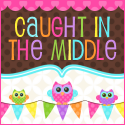How can you assess how much students recall from a book while also analyzing language and composing poetry? Text-rendered poems are a great way to re-explore past events in a story and analyze words for sound and imagery while creating a written composition.
Text-rendered poems are free-verse poems that use single words and phrases from a piece of text as the lines. They need not rhyme or follow any structure, only that all words are derived from the text and nothing is added by the writer. The poet's job is to artistically arrange the lines and words into a cohesive and meaningful poem.
I generally use text-rendered poems towards the middle or end of a piece of literature. I randomly select two-page spreads from the novel and make copies of them onto separate sheets. I choose as many pages as there are students in the class. Students then read through their passage and highlight single words or phrases that speak to them, create mental imagery or describe a key aspect of the story. Once they have highlighted at least ten words and phrases, they may begin composing their poem.
Each phrase or single word is a separate line in the poem. The student's job is to arrange these lines in such a way that is pleasing and artistic. Older students can even arrange their lines with meter or pentameter. My middle school students arrange the lines with variety of length and will sometimes have a specific goal, such as creating an alliterative sequence.
After the students have finished their poems, I generally have each student share what they have created. I am frequently surprised by how fluid and poetic these arrangements sound, and the students are often pleasantly surprised by their creation. The listeners then raise their hands and try to figure out which part of the story is being described.
As an example to model the process, we read a short story from an old book about a dog who had been stranded at sea on a commercial tanker. The story describes the rescue effort that ensued, the news coverage of the event, the massive donations from the public to save the dog, and finally his warm welcome to the shores of Hawaii. We projected the article onto the SmartBoard and selected phrases and words to highlight together. Then we arranged the phrases into a poem on the whiteboard. Above are images of the poem that we created based on this short story.
Subscribe to:
Post Comments (Atom)












0 comments:
Post a Comment